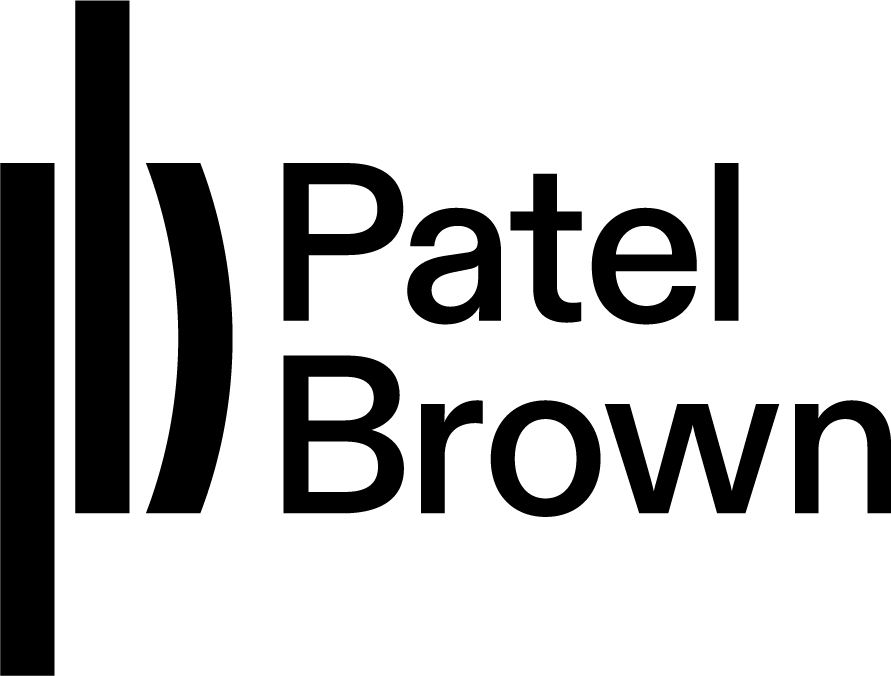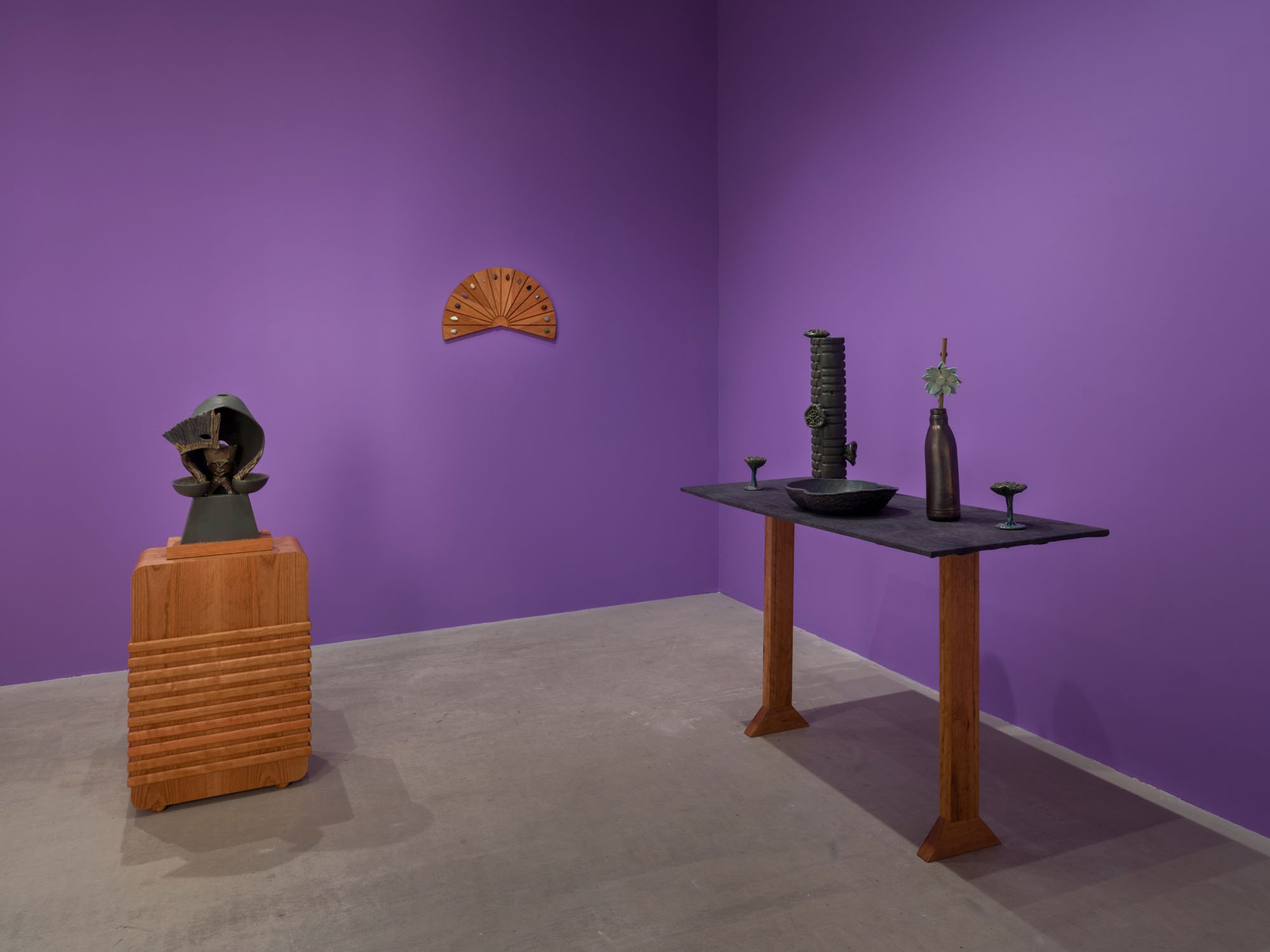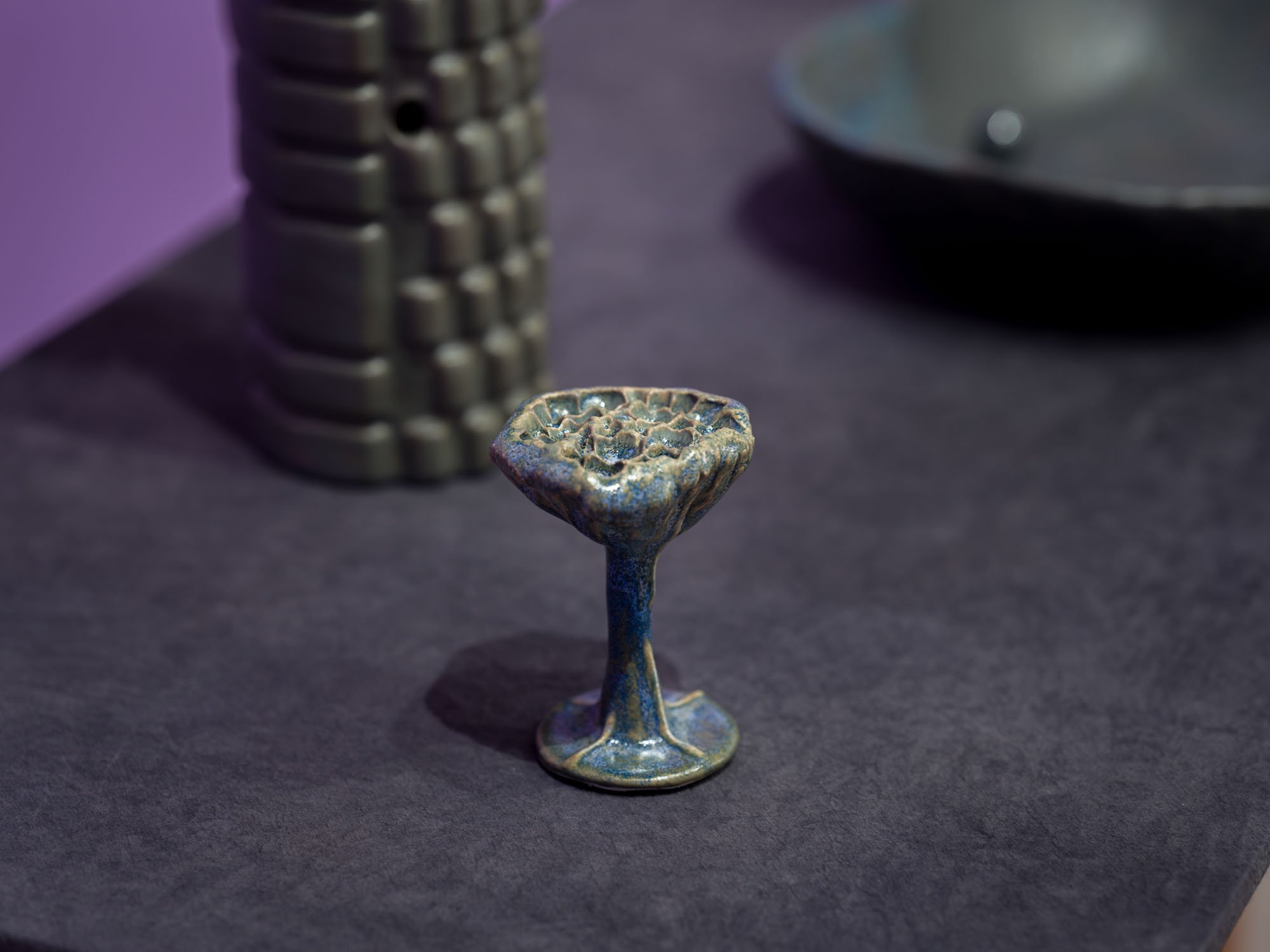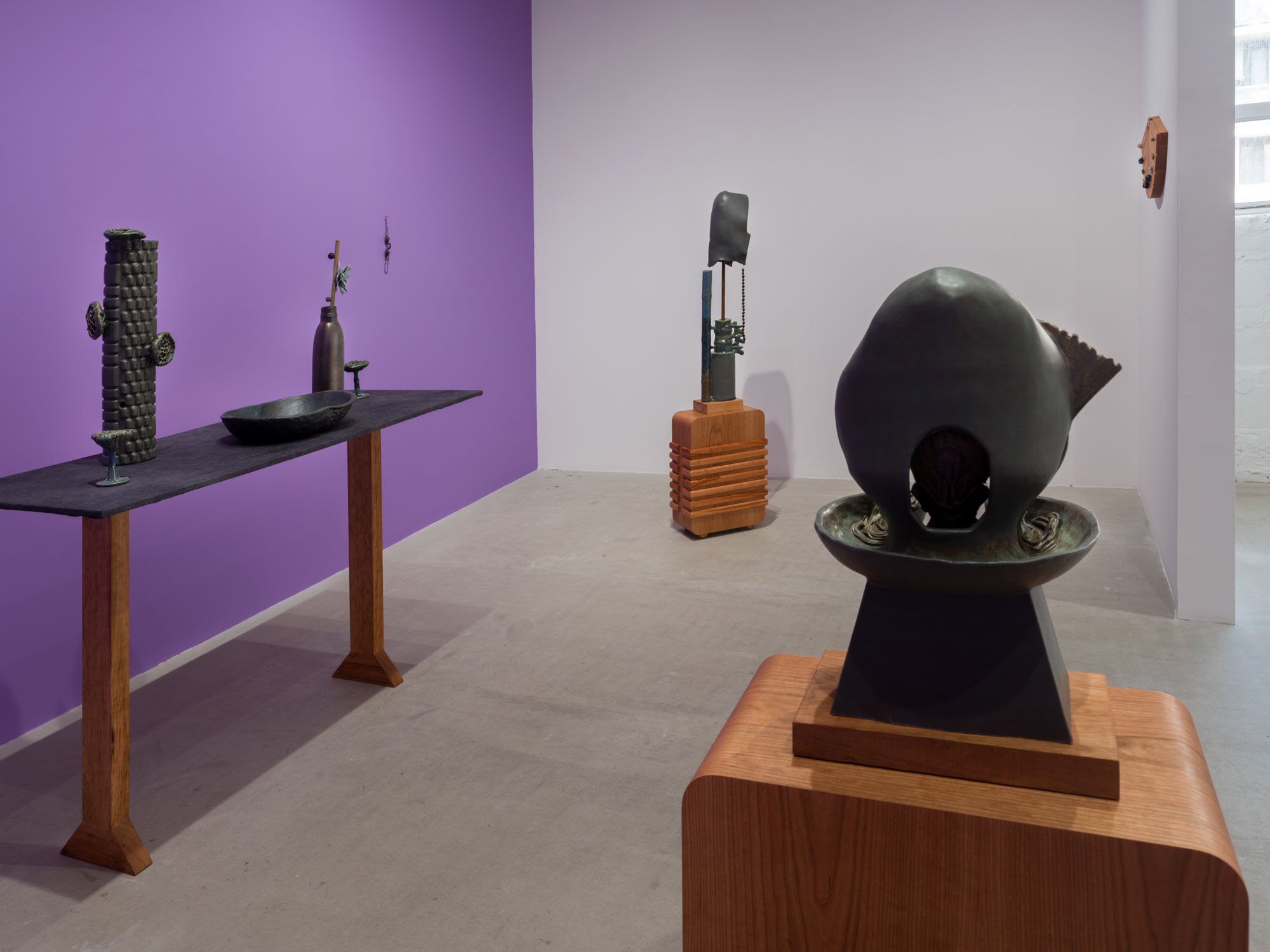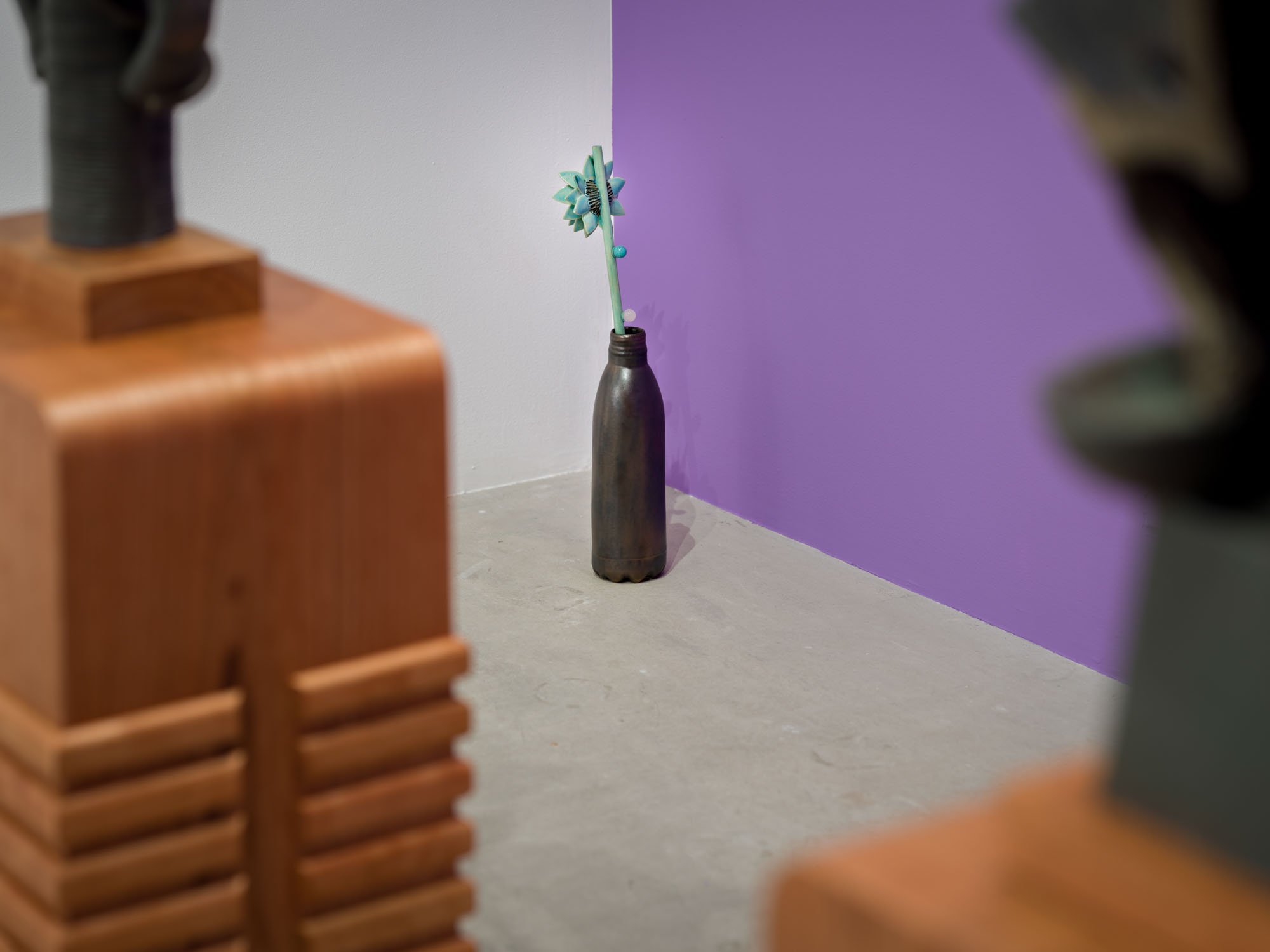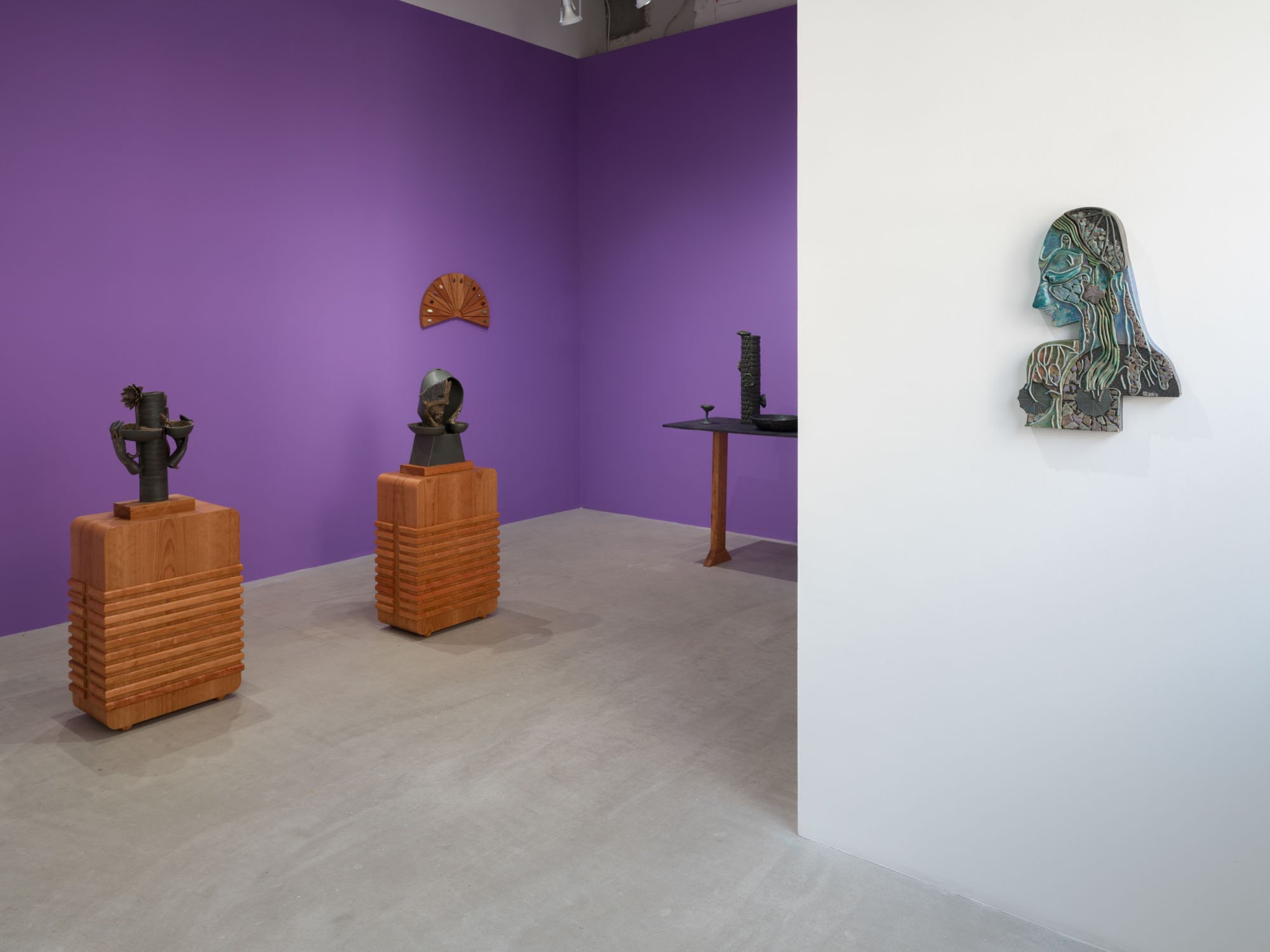21 WADE AVE #2 | TORONTO
Dominique Sirois | Meridian Liturgy for Travelers | 24 Feb - 23 March 2024
Dominique Sirois’s sculptural practice constantly ebbs and flows between languages, making works that become metaphors. She enmeshes nature, mysticism, creatures, and humans; she creates new vocabulary out of visual
languages that are deemed opposite, such as Eastern and Western aesthetics, or industrial and organic forms.
Circulation is a keyword that nourishes Sirois’ practice. During Spring 2023 on residency at Est-Nord-Est, she spent the time and space of her luminous live-work studio researching the circulation of energies in the body: on a table, a vent pipe made of clay was soon-to-be fused to the profile of a face in the kiln, to become an industrial throat with which breath and air would flow in and out.
In her first solo exhibition at Patel Brown, Sirois looks at circulation beyond that of energies; circulation is not merely through the body. This time more abstracted, the body is circulating: across meridians, across cultures, across rituals. In the ceramics assemblages, an evocated being ready to travel, with its neck pillow resting on a suitcase, implies the mandatory standstill right before the flux of bodies across time zones; one needs to acclimatize to the new hour, and potentially to different cultural symbols than what they have experienced before their relocation. For instance, the Figure of hemispheres wall works created as a pair, have facial features that at first glance seem to come from opposite sides of the world. One of the facial profiles, East. Kishangarh, is recognizably inspired by the Kishangarh art school: we can see the “elongated faces in profile, with receding foreheads, sharply defined noses and chins, heavy-lidded eyes and arched eyebrows[1]”. Even if the second piece, West. Speculative angel, seems to have a different facial profile, Sirois does not intend for Western and Eastern to be viewed as rigid binaries; rather, she shows how symbols and images circulate, travel back and forth, and blend throughout history. Other combinations of cultural aesthetics can be found throughout the exhibition. In yoga, the lotus represents each chakra, a symbol of the psychic spinal column. In Body pods, it embellishes a foam roller; in Venusian bath, a lotus adorns an industrial water bottle; it comes back again in, turned into a chalice in Lotus-chalice.
Stone Dial (after Hildegarde von Bingen) references how our own internal clock can adjust from traveling through time. Inspired by the work of doctor, naturalist, and later Saint, Hildegard von Bingen, each hour on the clock is associated with a precious gemstone that relates to their geologic properties (the sun rises East, and gemstones of the morning hours are linked with the element of fire). They are also associated with organs in the body; therefore certain times of day contain the elements that would be ideal for healing oneself, giving the proper energies to recover from travel across time zones.
This and all the sculptures in Meridian Liturgy for Travelers testify to inner movements of energy and how it can transform us from within. No need to pack a suitcase and travel far to connect with our own meridians: by remaining rooted in a given place on earth, we are the pathway along which energies can flow.
– eunice bélidor
[1] Kishangarh School of Painting, MAPACADEMY, last accessed February 4, 2024, https://mapacademy.io/article/kishangarh-school-of-painting/.
Dominique Sirois lives and works in Montreal. Her practice takes the form of multidisciplinary installations and are composed of complex displays presenting ceramics, sculptures and assemblages. Sirois works and spaces innterogate themes such as capitalist economy, sexuality, spirituality and technology. Her work has been exhibited at artist-run centres across Canada such as Clark, AXENÉO7 and Latitude 53. She has participated in international residencies in Glasgow, Paris, Shanghai, Taiwan, Barcelona and Banff. Sirois’s work has been shown in group shows at Fondation Phi and Gallery of UQAM (Montreal), The Ludwig Museum (Budapest), Le Commun (Geneva), Taipei MOCA and Unicorn Center for Arts (Beijing).
eunice bélidor is a curator, researcher, and writer born and based in Montreal. Her current curatorial research focuses on letter writing as creating affective archives; she is interested in the intersection of epistolary writing with care, feminism, anti-capitalism, and racial issues.
